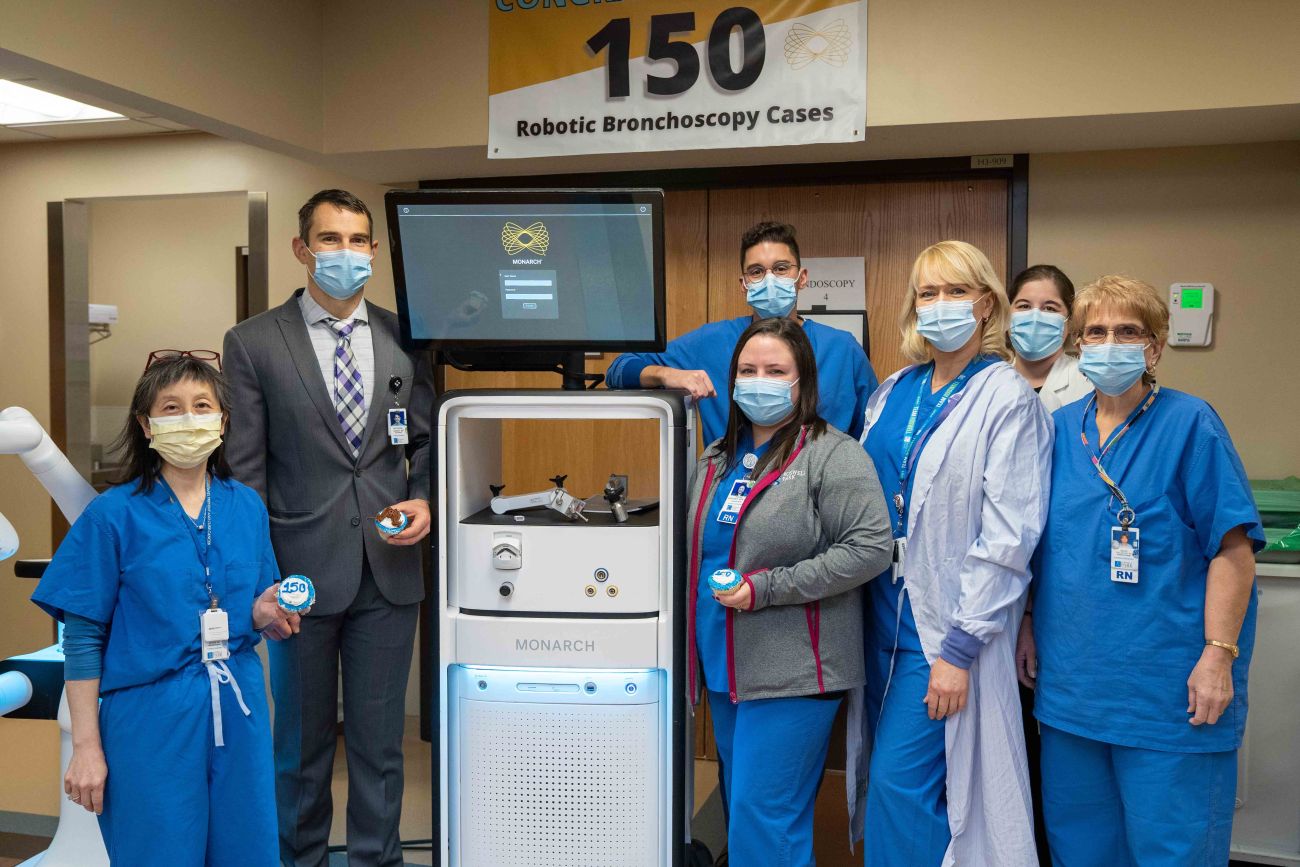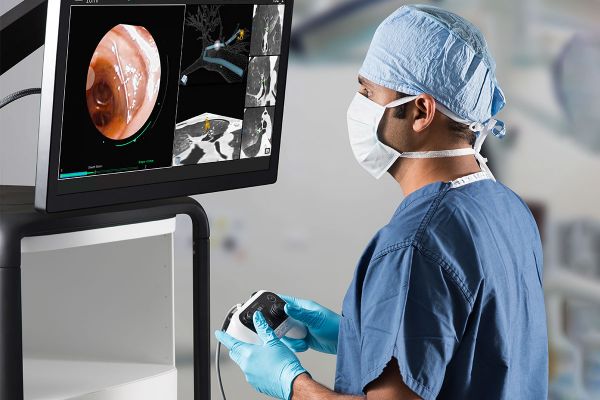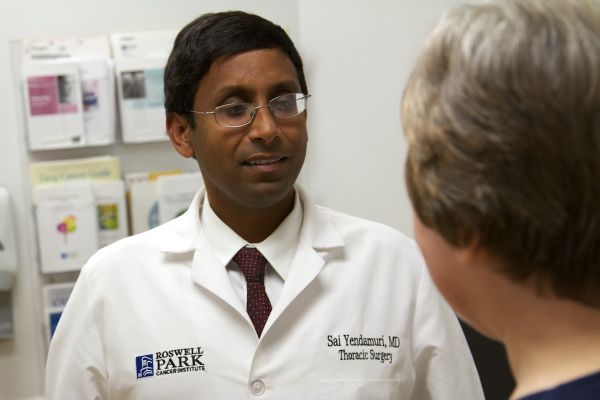Catching cancer early can make a world of difference. Thanks to our generous donors, lung specialists at Roswell Park Comprehensive Cancer Center have a new tool to find and access concerning lung nodules like never before.
Roswell Park was the first facility in New York State to access the Monarch™ platform from Auris Health Inc., a move that was spearheaded by Sai Yendamuri, MD, FACS, Chair of Thoracic Surgery and Professor of Oncology. The system offers minimally invasive robotic navigational bronchoscopies in Roswell Park’s Interventional Pulmonology program.
In addition to having the best available system for this work, Roswell Park has performed more procedures with the Monarch system than any other facility in the state. Since its introduction at Roswell Park in 2020, Nathaniel Ivanick, MD, FCCP, Assistant Professor of Oncology, and Elisabeth Dexter, MD, FACS, FCCP, Associate Professor of Oncology, have now performed over 150 robotic bronchoscopies using the Monarch system.
“This is an absolute win for medicine,” says Dr. Ivanick. It’s preferable to find a tumor before it grows or spreads; when it’s small enough to treat with surgery or targeted radiation, he notes. This “major upgrade” is capable of more stable and accurate bronchoscopies than other, older systems. This allows physicians to more quickly and easily detect lung nodules, take a more precise biopsy, diagnose the patient and move on to the best treatment plan for that individual.
The Monarch system not only produces top-notch results, but it also looks first-rate.
Patients like Michael Hornung from North Buffalo have felt the ease and promise of having the Monarch as part of their diagnosis and treatment journey at Roswell Park.
“I was impressed when I went into the room,” says Michael, who underwent this procedure and was diagnosed with non-small cell lung cancer. “The equipment was just incredible.”
A CT scan revealed a tumor in Michael’s left lung. Just weeks later, he was preparing to meet the Monarch. He felt apprehensive at first, but doctors Ivanick and Yendamuri detailed the process for him and were “very clear about what to expect.” Michael’s fears immediately vanished. He was on board to take full advantage of the technology science had made possible, trusting that the clinicians at Roswell Park would have him in their care.
While Michael was under anesthesia for a couple of hours, his wife was told right away what was discovered. Within a couple of days, Michael knew his treatment plan: pinpoint radiation.
“I was beautifully treated throughout the whole process,” says Michael. “Everyone at Roswell Park is just incredible.”
Why Roswell park for lung cancer?
In addition to robotic bronchoscopy, find out what makes Roswell Park unique in fighting lung cancer.
Learn MoreThe key to it all, he says: staying hopeful. “It helps you to stay positive. If you start thinking toward the negative side, all you do is concentrate on yourself … if you get that way, you give everything up.”
Thanks to an early diagnosis and a quick treatment plan, it’s Michael’s job now to enjoy time with his wife, children, grandchildren and the rest of his family in his lifelong community of North Buffalo.
The Monarch system and the success these physicians are demonstrating at Roswell Park is paving the way to being able to take a biopsy and enact the first round of treatment all in the first procedure, Dr. Ivanick believes.
“It’s a tremendously exciting piece of equipment that has brought us a long way forward.”
Editor’s Note: Cancer patient outcomes and experiences may vary, even for those with the same type of cancer. An individual patient’s story should not be used as a prediction of how another patient will respond to treatment. Roswell Park is transparent about the survival rates of our patients as compared to national standards, and provides this information, when available, within the cancer type sections of this website.



